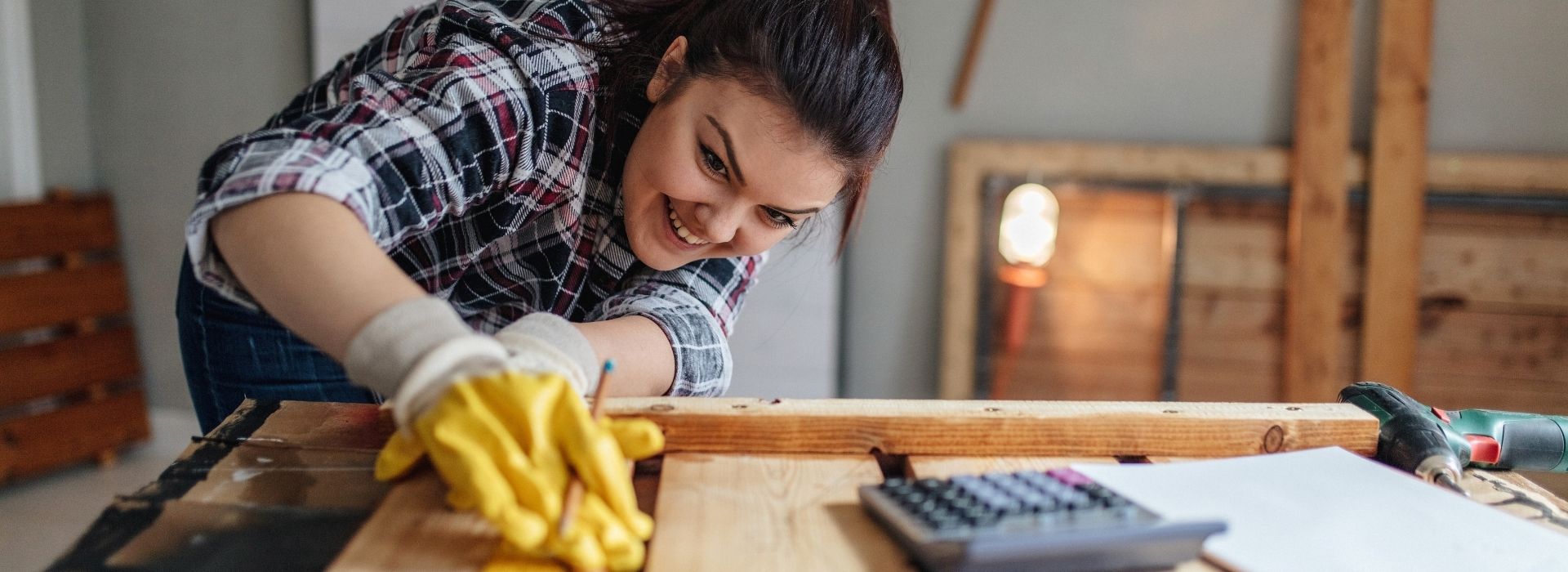Student Loans
Great Lakes Credit Union has everything you need to help manage your money and plan for the future.

Money SmartsSeptember 11, 2018
Is your home in desperate need of a face-lift? Bathrooms haven’t been remodeled since Bush was in the White House?
Many homeowners are thinking of making minor and major household improvements. And for most, the cost will be prohibitive: The average kitchen remodel tops $60,000 and a bathroom overhaul can run $18,000.
No worries, though! With some careful planning and smart choices, you can shave thousands off the cost of renovations.
Here are 7 terrific ways to save when remodeling.
1. Don’t do a complete remodel
It is tempting to want to go all out once you’re remodeling, but unless structural damage demands that a room or area be completely gutted, there’s rarely a reason to start from scratch.
Instead of knocking down walls and hallways, try to envision the outdated area with a fresh coat of paint, new light fixtures and some minor décor changes.
Is your kitchen a total blast from the past? Instead of giving it an overhaul, consider replacing the drawer handles and knobs, staining the cabinets and re-facing the moldings. Perfecting old cabinets can be a full 50% less expensive than putting in brand new ones.
Potential money saved: $30,000.
2. Shop around for a contractor
Choosing a contractor is not a decision to take lightly. You will want to find someone honest, professional and reliable – and willing to give you a decent price.
Don’t hire anyone on the spot; check out at least three different contractors before making your decision. Ask for references and meet with each contractor in person to get a feel for their character and professional conduct. Take note of whether they show up on time and their willingness to answer questions. Doing these simple tasks will provide you with important clues about their reliability. Be sure to ask your prospective contractor if they generally stick to their schedules or tend to fall behind. In this business, time is money, and a delay in a project’s completion can cost you a pretty penny.
Finally, be sure to sign a detailed contract before making any final decisions. The contract should stipulate the final cost and estimated timeframe for the project.
Potential money saved: several thousand dollars.
3. Consider long–term costs and benefits
You don’t want to choose the most expensive option for every remodeling decision you’re going to make, but it often makes sense to pay more now if it’ll save you big further down the line.
For example, if you are installing clapboard siding, you’ll save in the long run by paying more for pre-primed and pre-painted boards. Using the more expensive prefinished claps means you will need half as many paint jobs in the future.
Money saved: $1,250 (for a 10x40 area).
4. Pick decent but midgrade materials
Choosing the cheapest materials usually ends up costing more in the future. However, that doesn’t mean go with the most lavish and expensive. In general, it is best to go with the midgrade option whenever possible.
One significant area where you will see this at play is in carpeting. Basic olefin and polyester carpeting will run you $1 to $2 per square foot, while wool costs upward of $9 to $11 per square foot.
Money saved: $400 (for a 40-square-foot area).
5. Bring in natural light without windows
Are you looking to add a splash of sunshine in your kitchen? Don’t cut that gigantic hole in the side of your house just yet! Adding windows is a major deal and there are other, less expensive ways of bringing sunlight into your home.
Instead, consider installing a "light tube." This genius contraption slips between the rafters on your roof and works to funnel sunshine down and into the living space below.
Adding a double-pane window can run you $1,500, while a light tube is only $500.
Money saved: $1,000.
6. Lend a hand
You don’t have to be super-handy to help out and save money at the same time. You can easily do some of the demolition work yourself, paint some walls or even sand the walls to prep them for painting. If you think you are too clumsy for even these minor jobs, lend a hand with the cleanup at the end of a project. Why pay a cleanup crew $200 a day to sweep up sawdust when you can handle a broom just fine on your own?
Money saved: $200 a day or more.
7. Increase efficiency, not size
If you feel like your kitchen is too cramped and you need to push out some walls to make it work, think again. You can easily reorganize your kitchen for maximum efficiency and save tens of thousands of dollars.
Replace large, clumsy shelves with pullout drawers that are equipped with racks for easy, aesthetic storage space. Upgrade your cabinets with lazy susans, dividers, pullout trays and more.
Consider hiring a professional organizer to show you how to maximize the space you’ve got; the organizer’s fee and the money you’ll spend on the specialized cabinets will still fall way below the cost of an expansion.
Money saved: up to $60,000.
However you choose to go about your renovations, don’t forget to call, click, or stop by Great Lakes Credit Union (GLCU) today to learn about our fantastic rates on Fixed Home Equity Loans and Home Equity Lines of Credit (HELOC)!
SOURCES:
https://www.thisoldhouse.com/ideas/21-ways-to-save-your-remodel-0